Jade plants, specifically those in the Crassula genus, are widely popular plants for both indoor and outdoor cultivation. While the most well-known type is the Crassula ovata, or money plant, there are over 300 species in this genus, each with its own unique characteristics. Here, we will explore 14 types of jade plants that you can grow in your home.
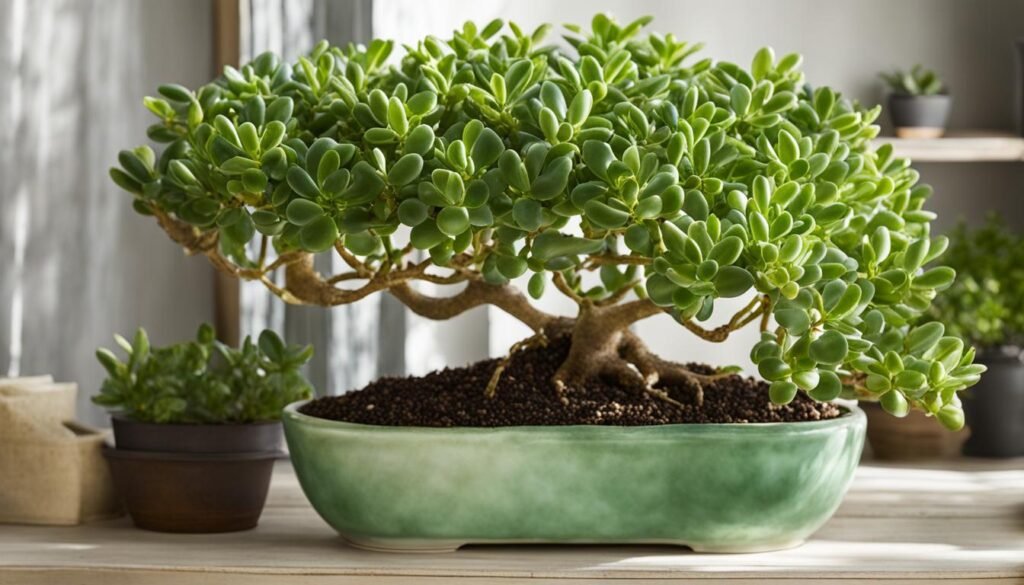
Key Takeaways:
- There are over 300 species of jade plants in the Crassula genus.
- Crassula ovata, also known as the money plant, is the most popular type of jade plant.
- Jade plants are low-maintenance and can thrive in different growing conditions.
- There are various cultivars of jade plants with different leaf shapes and colors.
- Jade plants make excellent additions to both indoor and outdoor gardens.
1. Crassula Ovata
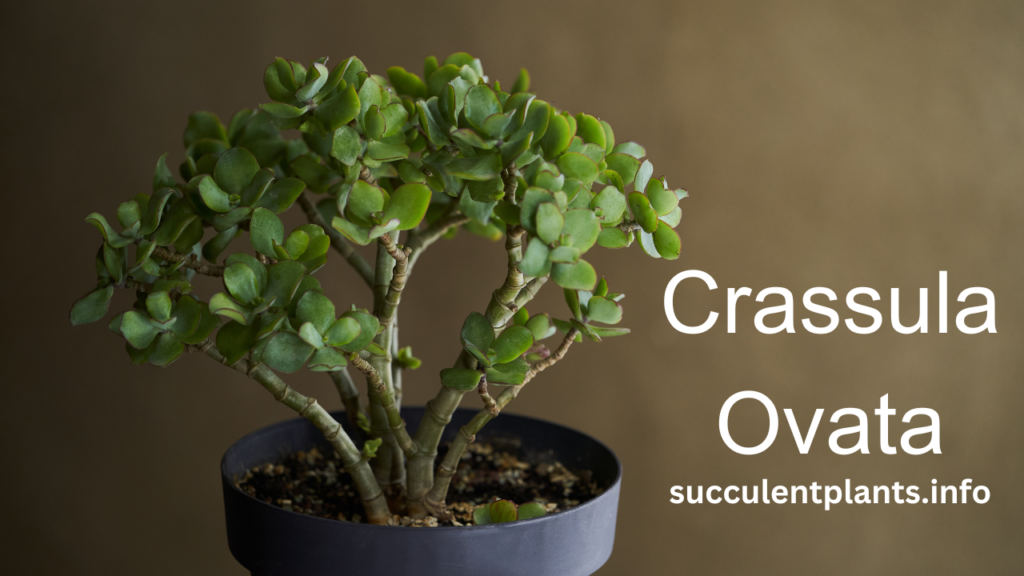
Crassula ovata, commonly known as the money plant, dollar plant, or lucky plant, is the most popular and widely available jade plant. Believed to bring fortune and good luck according to Feng Shui, this variety has medium green oval leaves and a shrub-like growth habit. When exposed to bright light, the leaves of Crassula ovata may develop a delightful red tinge at the edges.
If you’re looking for a plant that not only adds greenery but also symbolizes prosperity and blessings, Crassula ovata is the perfect choice. Its aesthetic appeal and symbolic significance have made it a favorite among plant enthusiasts around the world.
“Crassula ovata, commonly known as the money plant, dollar plant, or lucky plant, is believed to bring fortune and good luck according to Feng Shui.”
Characteristics of Crassula Ovata:
- Scientific Name: Crassula ovata
- Common Names: Money plant, dollar plant, lucky plant
- Leaf Color: Medium green
- Leaf Shape: Oval
- Growth Habit: Shrub-like
To help you visualize the beauty of Crassula ovata, take a look at this stunning image:
Now that you have an overview of Crassula ovata, let’s explore more fascinating types of jade plants in the sections to come.
2. Variegated Jade Plant (Crassula Ovata ‘Variegata’)
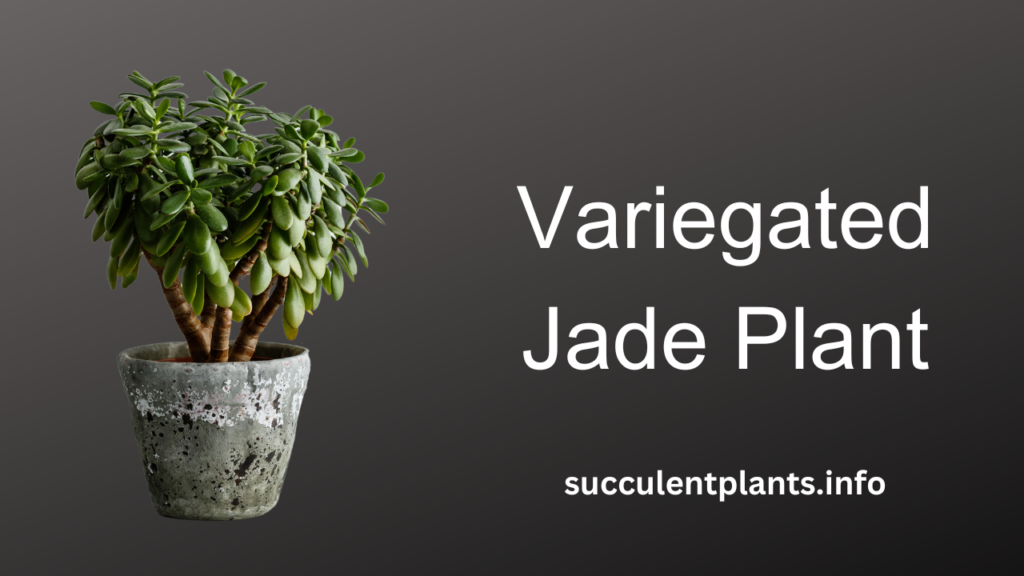
The variegated jade plant, also known as Crassula ovata ‘Variegata’, is a popular cultivar of the Crassula ovata. It is characterized by its light green, white, yellow, and sometimes pink multi-colored foliage. This variety requires consistent bright, indirect light to maintain its stunning colors.
One of the most striking features of the variegated jade plant is its vibrant foliage. The leaves display an array of colors, from light green to creamy white, with streaks of yellow and occasional hints of pink. This unique coloration adds visual interest to any indoor or outdoor space.
To keep the variegated jade plant healthy and thriving, it is crucial to provide it with bright, indirect light. Placing it near a north-facing window or in a well-lit room with curtains or blinds to filter the light is ideal. Direct sunlight can scorch the delicate foliage, so it’s essential to avoid exposing it to intense rays.
In terms of care, the variegated jade plant is relatively low-maintenance. Here are some essential tips to keep in mind:
- Water the plant thoroughly once the top inch of the soil feels dry to the touch. Ensure the pot has proper drainage to prevent waterlogged roots.
- Avoid overwatering, as excessive moisture can lead to root rot.
- During the growing season (spring and summer), the variegated jade plant benefits from a balanced houseplant fertilizer, applied according to the package instructions.
- Maintain a temperature range of 60-75°F (15-24°C), as the plant prefers moderate temperatures. Avoid exposing it to drafts or extreme temperature fluctuations.
- Prune the variegated jade plant to maintain its compact shape and encourage bushier growth. Use clean, sharp pruning shears to remove any leggy or damaged stems.
With proper care, the variegated jade plant can thrive for many years, beautifying your living space with its stunning foliage. Whether displayed as a standalone plant or as part of a succulent arrangement, this cultivar is sure to attract attention and admiration.
3. Crosby’s Compact Jade (Crassula Ovata ‘Crosby’s Compact’)
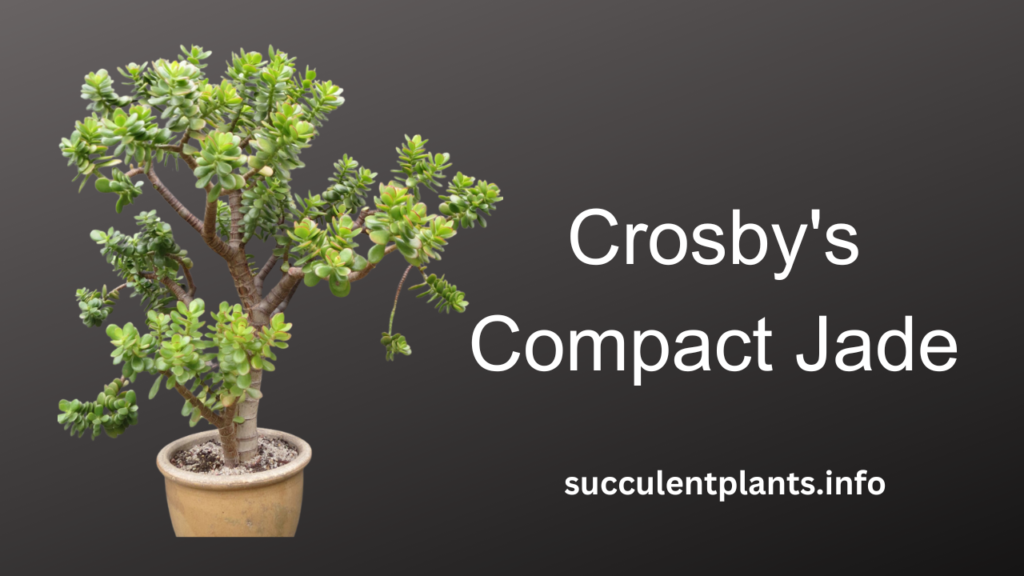
Crosby’s Compact Jade, scientifically known as Crassula ovata ‘Crosby’s Compact’, is a charming variant of the standard Crassula ovata. This dwarf cultivar features small, rounded leaves and a compact growth habit. Its petite size makes it perfect for those seeking a space-saving addition to their collection.
One of the standout features of Crosby’s Compact Jade is its stunning coloration. When exposed to direct sunlight, the leaves transform into vibrant shades of red, yellow, and orange, creating a striking display of natural beauty. Whether positioned on a sunny windowsill or incorporated into an outdoor landscape, this plant is sure to catch the eye.
Featuring the same resilience and low-maintenance qualities as its larger counterparts, Crosby’s Compact Jade is an excellent choice for both novice and experienced gardeners. It can thrive in various light conditions, from bright indirect light to full sun, and requires minimal watering, making it an ideal plant for busy individuals.
Characteristics of Crosby’s Compact Jade:
- – Dwarf cultivar of the Crassula ovata species
- – Small, rounded leaves
- – Compact growth habit
- – Transforms to vibrant shades of red, yellow, and orange in direct sunlight
- – Resilient and low-maintenance
- – Suitable for indoor and outdoor cultivation
With its unique appearance and easy-care nature, Crosby’s Compact Jade is a delightful addition to any plant lover’s collection. Whether displayed as a standalone plant or combined with other succulents, it brings a touch of beauty and elegance to any space.
So, if you’re looking for a visually captivating and hassle-free plant, consider adding Crosby’s Compact Jade to your indoor garden or outdoor landscape. Its small stature and vibrant colors make it a true gem in the world of succulents.
4. Pink Beauty Jade (Crassula Ovata)

The pink beauty jade, or Crassula ovata, is a stunning variety that distinguishes itself from other Crassula ovata plants with its vibrant pink blooms. This eye-catching jade plant features relatively small leaves with a red tinge around the tips, especially when exposed to direct sunlight. It has an impressive growth potential, reaching heights between three to five feet, making it a lovely addition to any indoor or outdoor garden.
One of the most captivating aspects of the pink beauty jade is its exquisite pink flowers, which bloom during the fall and winter months. These delicate blossoms add a touch of elegance and vibrancy to the plant, making it a favorite among jade plant enthusiasts. Whether displayed as a standalone plant or included in a mixed plant arrangement, the pink beauty jade is sure to draw attention and bring a sense of beauty to any space.
Similar to other jade plant varieties, the pink beauty jade requires well-draining soil and moderate watering. It thrives in bright, indirect light, but it can tolerate lower light conditions as well. With its striking appearance and relatively easy care requirements, the pink beauty jade is an excellent choice for both experienced and novice plant enthusiasts.
Key Features of Pink Beauty Jade:
- Stunning pink blooms
- Relatively small leaves with red tips
- Grows to be between three to five feet tall
- Pink flowers that bloom during the fall and winter months
- Requires well-draining soil and moderate watering
- Thrives in bright, indirect light
Experience the beauty of the pink beauty jade and elevate the aesthetic appeal of your home or garden with this mesmerizing jade plant variety.
5. Gollum Jade (Crassula Ovata ‘Gollum’)
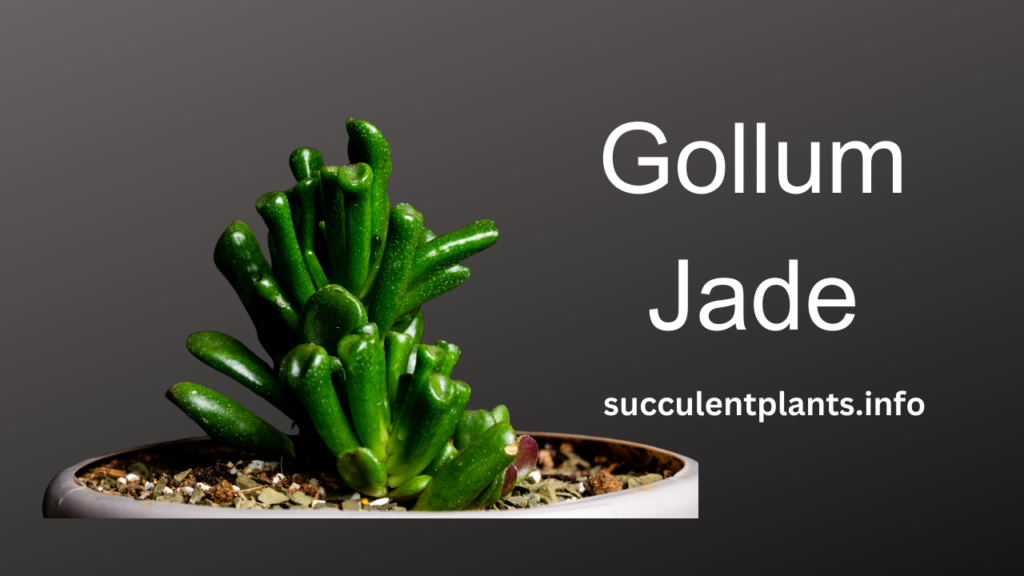
The Gollum jade, also known as Crassula ovata ‘Gollum’, is a captivating variety named after its unique tubular leaves with circular tips that resemble small suction cups. This medium-sized jade plant typically reaches a height of about two to three feet, making it a versatile addition to any indoor or outdoor garden.
The Gollum jade’s distinct leaf shape sets it apart from other jade plant varieties. The tubular leaves create an intriguing visual appeal, while the circular tips add a touch of whimsy to its overall appearance. The leaves have a glossy green color, providing a vibrant backdrop for the plant’s unique leaf shape.
The Gollum jade’s tubular leaves with circular tips give it a nostalgic resemblance to the iconic character from J.R.R. Tolkien’s The Lord of the Rings. The plant’s whimsical form adds a touch of fantasy and allure to any space it inhabits.
In addition to its eye-catching aesthetics, the Gollum jade is relatively easy to care for, making it an excellent choice for both experienced gardeners and those new to plant care. Like other jade plants, it thrives in bright, indirect light and prefers a well-draining soil mixture. Allow the soil to dry between waterings to prevent overwatering, as jade plants are susceptible to root rot.
As a drought-tolerant succulent, the Gollum jade is known for its ability to store water in its leaves. This characteristic allows it to withstand periods of dryness, making it a low-maintenance choice for busy individuals or those who may sometimes forget to water their plants.
Whether displayed as a standalone plant or as part of a jade plant collection, the Gollum jade is sure to attract attention and bring a touch of whimsy to any space. Its captivating leaf shape and medium size make it an ideal choice for both indoor and outdoor gardens, offering a unique twist on the classic jade plant.
Notable Features of the Gollum Jade:
- Tubular leaves with circular tips
- Medium size, reaching two to three feet in height
- Glossy green leaves
- Low maintenance and drought-tolerant
6. Hobbit Jade (Crassula Ovata ‘Hobbit’)
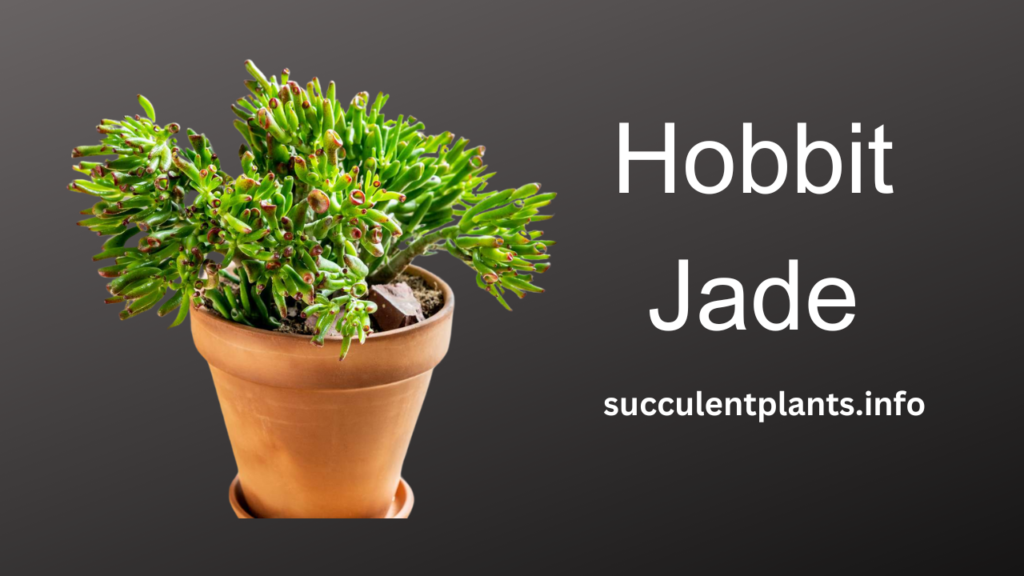
The hobbit jade, scientifically known as Crassula ovata ‘Hobbit’, is a unique jade plant variety that bears a striking resemblance to the Gollum jade. However, it can be easily distinguished by its spoon-shaped leaves that curl inward, giving it a tubular appearance. This fascinating feature lends the hobbit jade its distinct charm and makes it a captivating addition to any indoor or outdoor garden.
The hobbit jade typically reaches a height of two to three feet, making it a relatively compact plant. Its compact size makes it suitable for a variety of settings, from small apartments to spacious landscapes. This jade plant thrives in moderate to bright light conditions and requires well-draining soil to prevent root rot. Like other jade plants, the hobbit jade is known for its drought tolerance, making it a low-maintenance choice for plant enthusiasts of all experience levels.
The unique appearance of the hobbit jade, with its curiously shaped leaves, has earned it a special place among jade plant enthusiasts. Its captivating form adds an element of intrigue and whimsy to any plant collection or garden. Whether grown as a standalone specimen or part of a jade plant arrangement, the hobbit jade is sure to be a conversation starter with its distinctive tubular foliage.
Benefits of Growing Hobbit Jade
- The spoon-shaped leaves of the hobbit jade provide an interesting visual contrast to other plants in your collection.
- Its compact size makes it suitable for smaller spaces, such as windowsills or tabletops.
- The hobbit jade is a hardy plant that can tolerate neglect and dry conditions, making it a resilient choice for busy individuals.
- Like other jade plants, the hobbit jade is known for its air-purifying properties, helping to improve indoor air quality.
“The unique appearance of the hobbit jade, with its curiously shaped leaves, has earned it a special place among jade plant enthusiasts.”
To help you better understand the distinguishing features of the hobbit jade, refer to the table below for a side-by-side comparison with the Gollum jade:
| Hobbit Jade (Crassula Ovata ‘Hobbit’) | Gollum Jade (Crassula Ovata ‘Gollum’) |
|---|---|
| Leaves have a spoon-shaped, curled inward appearance | Leaves are tubular with circular tips resembling suction cups |
| Grows up to 2-3 feet in height | Grows up to 2-3 feet in height |
| Thrives in moderate to bright light | Thrives in moderate to bright light |
| Requires well-draining soil | Requires well-draining soil |
As you can see, while both the hobbit jade and the Gollum jade share some similarities, their leaf shapes set them apart from each other. These unique jade plant varieties offer a captivating and diverse range of forms to choose from, allowing you to curate a collection that is as visually appealing as it is intriguing.
7. Variegated Gollum Jade (Crassula Ovata ‘Gollum Variegated’)
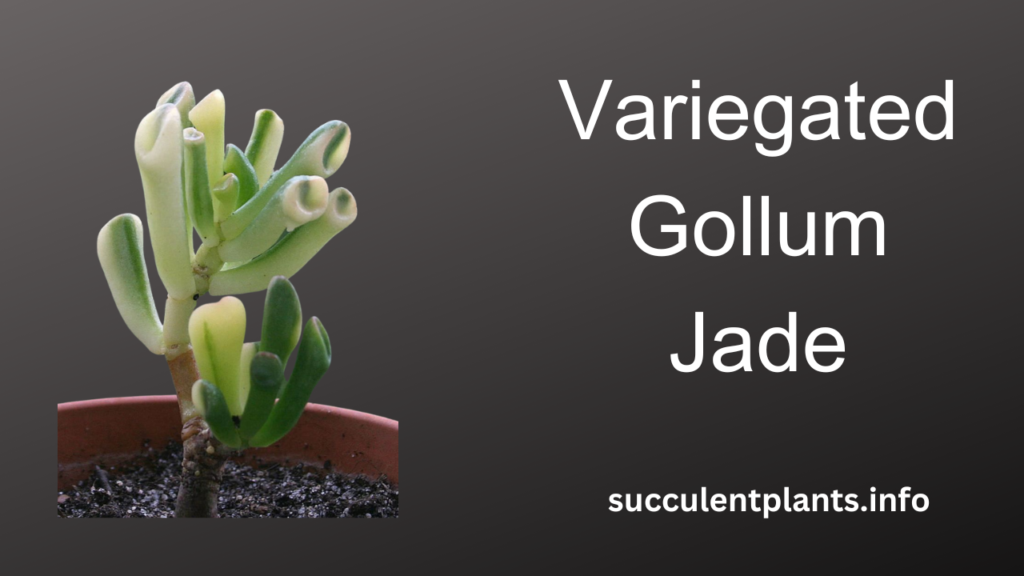
The variegated Gollum jade, or Crassula ovata ‘Gollum Variegated’, is a cultivar of the Gollum jade known for its pale green and white streaked foliage. Compared to its non-variegated counterpart, it is a slow-grower and requires plenty of bright, indirect light to maintain its variegation.
This unique variety adds a stunning touch to any indoor or outdoor garden. With its delicate coloration and distinctive leaf pattern, the variegated Gollum jade is an eye-catching addition to your plant collection.
8. Skinny Fingers Jade (Crassula Ovata ‘Skinny Fingers’)
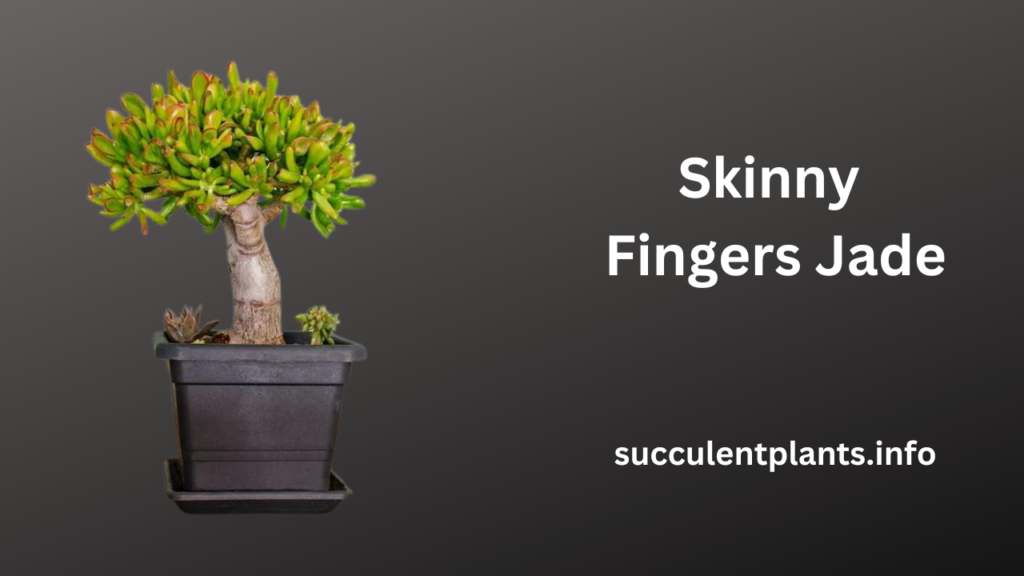
The skinny fingers jade, or Crassula ovata ‘Skinny Fingers’, is another tubular-shaped jade plant. Its leaves are longer, skinnier, and thinner at the tips compared to the Gollum and hobbit jades. This variety can reach heights of two to three feet.
With its unique leaf shape, the skinny fingers jade adds a touch of elegance to any garden or indoor space. The elongated, slender leaves create a visually striking appearance and make this variety stand out among other jade plants.
As with other Crassula ovata varieties, the skinny fingers jade prefers bright, indirect light and well-draining soil. It is a relatively low-maintenance plant, making it suitable for both beginner and experienced plant enthusiasts.
Whether grown as a standalone plant or incorporated into a succulent arrangement, the skinny fingers jade adds a touch of character and beauty to any setting. With proper care and attention, this variety can thrive, bringing joy and a touch of nature to your space.
9. Crassula Red Coral (Crassula Ovata ‘Red Coral’)
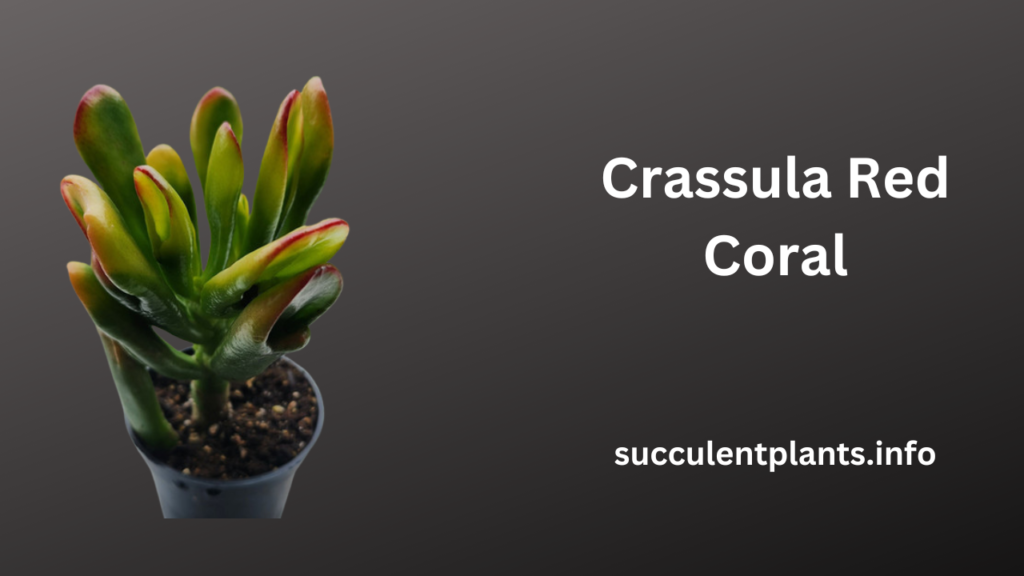
The Crassula red coral, or Crassula ovata ‘Red Coral’, is a captivating jade plant cultivar known for its vibrant and eye-catching foliage. This variety showcases shades of red and yellow, which are most pronounced when exposed to direct sunlight. With its striking colors, the Crassula red coral adds a touch of warmth and beauty to any indoor or outdoor space.
The Crassula red coral is a moderate-sized jade plant, typically growing to be about three feet tall and two feet wide. Its upright growth habit creates a visually appealing silhouette, making it a wonderful addition to plant collections or as a standalone centerpiece.
This variety of Crassula ovata can thrive both indoors and outdoors, but it is important to note that it may require a grow light when grown indoors to maintain its vivid red and yellow hues. Pruning can also be beneficial to shape the plant and encourage fuller growth.
Like other jade plants, the Crassula red coral is relatively low-maintenance and easy to care for. It prefers well-draining soil and infrequent watering, allowing the soil to completely dry between waterings. This drought-tolerant plant is a great choice for busy plant enthusiasts or those who tend to forget regular watering schedules.
Whether placed on a sunny windowsill, incorporated into a succulent garden, or featured as a statement piece in a room, the Crassula red coral adds a pop of color and personality to any environment.
Key Features of Crassula Red Coral:
- Distinctive red and yellow foliage
- Medium-sized, reaching about three feet tall and two feet wide
- Upright growth habit
- Can be grown indoors and outdoors
- May require a grow light indoors to maintain vibrant colors
- Low-maintenance and drought-tolerant
The Crassula red coral is a beautiful option for plant lovers looking to make a statement with their jade plant collection. Its unique coloration and easy-care nature make it an ideal choice for both beginner and experienced gardeners alike.
10. Botany Bay Jade (Crassula Ovata ‘Botany Bay’)
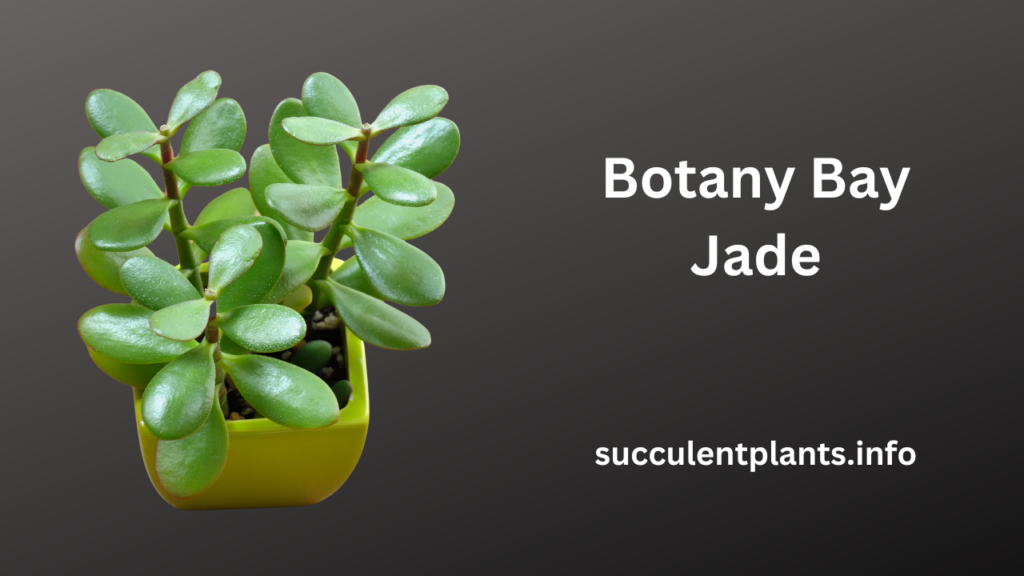
The Botany Bay jade, scientifically known as Crassula ovata ‘Botany Bay’, is a compact and bushy cultivar of the Crassula ovata. This beautiful jade plant features light green-yellow leaves with red tips that add a splash of color to any space. With its compact growth habit, it reaches heights of two to three feet, making it a versatile choice for both indoor and outdoor gardens.
“The Botany Bay jade is a stunning addition to any plant collection. Its vibrant colors and compact size make it a popular choice among gardening enthusiasts.” – Garden enthusiast
Introduced in 2011 by Garden Gate Nursery, the Botany Bay jade has quickly gained popularity for its unique appearance and easy-care nature. This variety thrives in bright, indirect light but can tolerate some direct sunlight. It is also drought-tolerant, making it a low-maintenance option for busy plant lovers.
Whether displayed in a pot or planted directly in the ground, the Botany Bay jade is sure to catch the eye with its striking foliage. Its light green-yellow leaves create a beautiful contrast against its red tips, adding visual interest and depth to any garden or indoor space.
If you’re looking for a jade plant variety that stands out and demands attention, the Botany Bay jade is an excellent choice. Its compact size, attractive colors, and easy-care requirements make it a favorite among plant enthusiasts of all levels of experience.
Botany Bay Jade Care Tips:
- Light: Bright, indirect light. Can tolerate some direct sunlight.
- Watering: Allow the soil to dry out between waterings. Avoid overwatering.
- Soil: Well-draining soil mixture, such as cactus or succulent potting mix.
- Temperature: Prefers temperatures between 60-75°F (15-24°C).
- Fertilizer: Feed with a balanced liquid fertilizer once a month during the growing season.
- Propagation: Easily propagated from stem or leaf cuttings.
Botany Bay Jade Characteristics:
| Characteristics | Details |
|---|---|
| Scientific Name | Crassula ovata ‘Botany Bay’ |
| Common Name | Botany Bay Jade |
| Type | Compact shrub |
| Height | 2-3 feet |
| Leaf Color | Light green-yellow with red tips |
| Hardiness Zones | 10-11 |
With its vibrant colors and compact form, the Botany Bay jade is a standout addition to any collection. Whether you’re a seasoned gardener or just starting your plant journey, this beautiful jade plant is sure to bring joy and visual interest to your space.

11. Hummel’s Sunset Jade (Crassula Ovata ‘Hummel’s Sunset’)
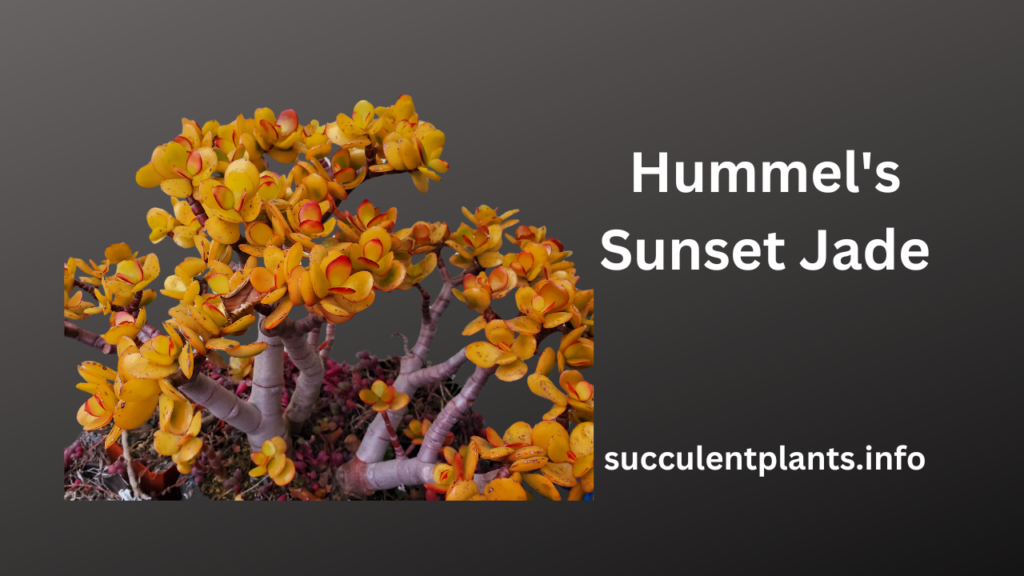
Hummel’s sunset jade, or Crassula ovata ‘Hummel’s Sunset’, is a vibrant cultivar of the classic Crassula ovata. This stunning variety is renowned for its foliage, which features a beautiful blend of yellow, orange, and red hues. These colors become even more vivid during the winter months, adding a warm and captivating touch to any space.
Known for its mounding, shrub-like growth habit, Hummel’s sunset jade is a versatile plant that can be used both indoors and outdoors. Its compact size makes it an excellent choice for bonsai enthusiasts, as it can be easily shaped and pruned into desired forms. This cultivar is particularly favored for its striking visual appeal and ability to create eye-catching arrangements.
If you’re looking to bring a burst of color and vitality to your garden or living space, Hummel’s sunset jade is an excellent choice. Its vibrant leaves and unique growth habit make it a standout among other jade plants, ensuring that it will be a focal point in any collection or arrangement.
12. Mini Jade (Crassula Ovata ‘Minima’)
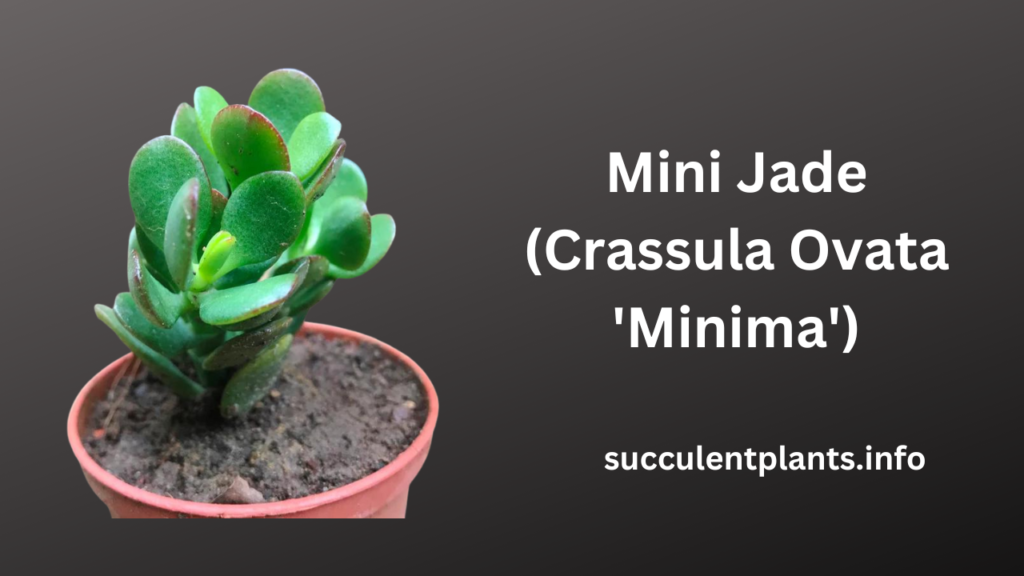
The mini jade, or Crassula ovata ‘Minima’, is a popular dwarf cultivar of the jade plant. It is characterized by its small, rounded leaves that grow closely together, creating a dense and bushy appearance. This variety is commonly used as a houseplant and bonsai tree due to its compact size. However, it is also suitable for filling small spaces in outdoor gardens, adding a touch of greenery and elegance.
The mini jade is highly sought after for its unique beauty and versatility. Its small foliage and compact growth habit make it a perfect addition to any indoor space, whether it’s an apartment, office, or even a small corner in a larger room. This jade plant variety is known for its ability to adapt to various lighting conditions, although it thrives best in bright, indirect light.
When it comes to care, the mini jade is relatively low-maintenance. It requires well-draining soil and regular watering, allowing the top inch of soil to dry out between each watering session. Overwatering can lead to root rot, so it’s essential to strike a balance and avoid excessive moisture. Additionally, providing occasional fertilizer during the growing season can help promote healthy growth and vibrant foliage.
Benefits of Mini Jade:
- Compact size ideal for small indoor spaces
- Can be grown as a houseplant or bonsai tree
- Adapts well to different lighting conditions
- Dense foliage adds a touch of greenery and freshness
- Low-maintenance and relatively forgiving plant
Whether you’re a seasoned plant enthusiast or new to gardening, the mini jade is an excellent choice for any plant lover. Its miniature size, attractive foliage, and adaptability make it a popular option for both beginners and experienced growers. Incorporate the mini jade into your indoor or outdoor space and enjoy the beauty and tranquility it brings.
| Variety | Scientific Name | Description |
|---|---|---|
| Mini Jade | Crassula Ovata ‘Minima’ | Compact dwarf cultivar with small rounded leaves, ideal for small spaces. |
Discover the beauty and charm of the mini jade, and bring a touch of natural elegance to your living space. Whether displayed as a standalone plant or incorporated in a bonsai arrangement, the mini jade is sure to captivate and delight.
13. Silver Dollar Jade (Crassula Arborescens)
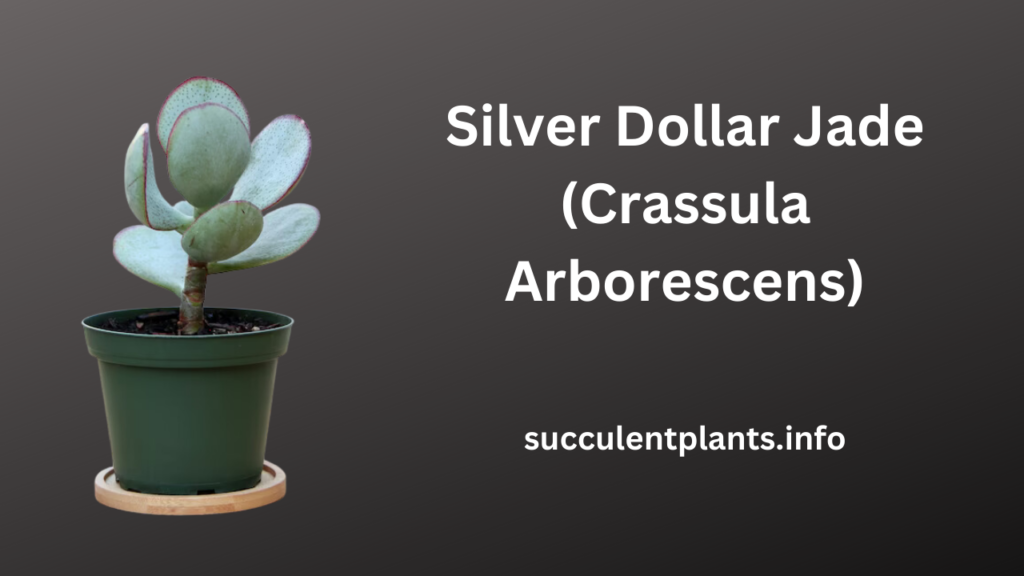
The silver dollar jade, scientifically known as Crassula arborescens, is a stunning variety of jade plant that is highly sought after for its unique foliage. This plant gets its name from its round, blue-grey leaves that resemble silver coins. The silver dollar jade is a visually striking addition to any indoor or outdoor garden.
One of the most remarkable features of the silver dollar jade is its ability to change colors under different light conditions. When exposed to bright light, the leaves of this plant develop a deep red color around the edges, adding a vibrant touch to its overall appearance.
An ideal choice for succulent enthusiasts, the silver dollar jade is known for its low-maintenance nature and ability to tolerate a wide range of growing conditions. Whether you have a sunny spot indoors or a well-draining garden outdoors, this jade plant will thrive with minimal care.
Like other varieties of jade plants, the silver dollar jade is also drought-tolerant, making it a resilient choice for those who may forget to water their plants regularly. However, it’s important to note that this plant prefers well-draining soil to prevent root rot.
If you’re looking to add a touch of elegance and uniqueness to your plant collection, the silver dollar jade is an excellent choice. Its round, silver foliage and stunning color-changing abilities make it a standout gem in any garden.
Next, let’s explore another stunning jade plant variety – Crassula arborescens ‘Blue Bird Variegata’.
14. Crassula Arborescens ‘Blue Bird Variegata’
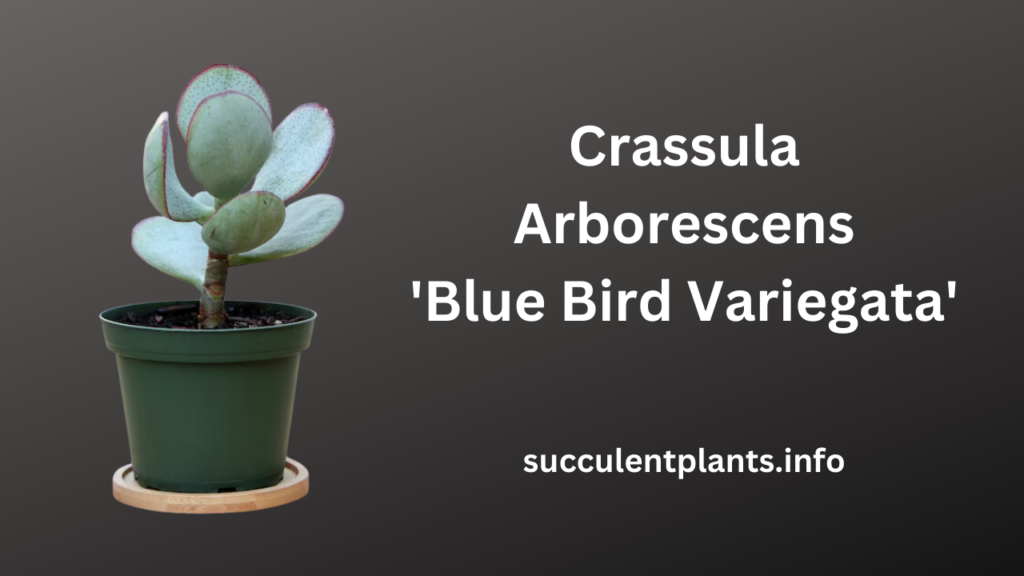
Crassula arborescens ‘Blue Bird Variegata’ is a unique and vibrant cultivar of the silver dollar jade. This stunning variety features large, flat leaves with eye-catching yellow edges and delicate light green stripes down the center. When exposed to bright light conditions, the leaves may develop beautiful pink hues, adding an extra touch of color to this already-striking plant.
The Crassula arborescens ‘Blue Bird Variegata’ is a perfect addition to any plant collection, bringing a touch of excitement and uniqueness. Its distinct foliage stands out and creates a visually appealing display wherever it is placed.
With its enticing coloration and bold appearance, this cultivar is sure to be a conversation starter. Whether displayed individually or as part of a larger collection, the ‘Blue Bird Variegata’ is a show-stopping jade plant that adds a touch of natural beauty to any space.
Conclusion on 14 Types of Jade Plants
Jade plants offer a diverse range of species and cultivars, making them a versatile choice for adding greenery and beauty to your home. With over 30 types of jade plants to choose from, including popular varieties like Crassula ovata and unique options like Gollum jade and silver dollar jade, there is a perfect jade plant for every plant enthusiast, whether you’re a beginner or experienced gardener.
One of the advantages of jade plants is their low-maintenance nature. They are resilient and can tolerate different growing conditions, making them ideal for both indoor and outdoor gardens. Whether you have limited space or a spacious garden, these plants will thrive and bring a touch of elegance to your living space.
From their vibrant green foliage to their charming shapes and sizes, jade plants are not only visually appealing, but they also offer numerous benefits. They can improve air quality by filtering toxins, promote relaxation, and bring a sense of calm and tranquility to your surroundings.
So, why wait? Choose from the various types of jade plants available, explore different jade plant species, and unleash your creativity in styling and caring for these beautiful plants. Embrace the elegance and versatility of jade plants and transform your living space into a green oasis.
FAQs on Types of Jade Plants